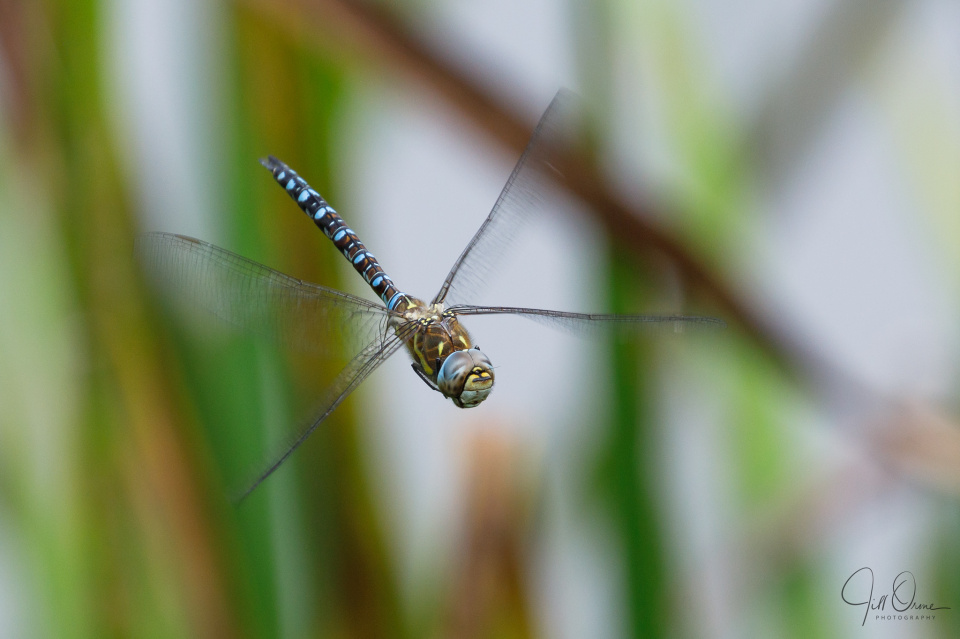My apologies for the background here, but I only photograph the dragons – I don’t get to tell them where to go and stand. I can’t decide whether it reminds me more of a Habitat fabric design, c.1980, or the kind of abstract art you sometimes see hanging in the lesser used corridors of chain hotels – but no matter. It sets the Migrant Hawker in his environment, which was a piece of reed bed he was patrolling for females and food, while simultaneously looking out for rivals and enemies. Top of his potential enemies list at the time was me, because he knew I was targeting him in some way, but as long as I didn’t make any sudden movements he was prepared to give me the benefit of the doubt, and carry on about his business.
When it comes to photographing dragonflies in flight, Migrant Hawkers are by far the easiest to work with, because they’re a reasonable size and they frequently hover for several seconds at a time. Sadly, they’re also a gateway drug to long hours wasted chasing round after the more difficult guys: Southern Hawkers are more challenging than Migrants, but possible because they tend to be quite bold and interested in humans; Emperors and Brown Hawkers are big and easy to spot, but seem to be perpetual motion machines; Common Hawkers are similarly indefatigable, but also erratic, and have ridiculous acceleration; Golden-ringed Dragonflies are too fast and blend too well into their environment; and the Emeralds are generally almost invisible until the light hits them, as they zip past you in a blur of metallic green. Then you’re into the silly territory of the speed champions: Chasers, Skimmers, and Darters, which chase, skim, and dart, and are generally best left alone – though darters will hover until the precise moment when you get focus on them, at which point they give you a cheery wave and make the leap into hyperspace. Not that I’m bitter.
A few Migrant Hawker facts. They’re about 6cm in length, the female (which has long anal appendages) being slightly larger than the male. Males appear mainly brown and blue, while females are brown and greeny yellow; both have a pair of bold yellow stripes on the sides of the thorax, and a diagnostic yellow mark like a golf tee at the base of the abdomen. Unusually for a hawker, they have a one-year life cycle: eggs laid this summer will hatch next spring, and the larvae will undergo very rapid growth until emergence in July and August. In a mild year the flight season can last into November.







